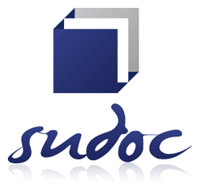Mystical thought at the University of Paris in the 12 and 13th centuries
Abstract
The profound moral crisis emerged after the fall of the empire of Charles the Great, and still present until part of the 12th century, has as a consequence a fundamental spiritual renewal in the religious and mystical fervor of some extraordinary men and women. Its manifestation in the philosophical-theological thinking is one of the most significant expressions of the medieval history of central Europe. Diversity of mystical experiences and modalities compose a possible synthesis in the thinking of Parisian School of Saint Victor, with their representatives Richard and Hugh, but also in Franciscans and Dominicans paradigmatic figures like Bonaventure of Bagnoregio and Thomas Aquinas. Common to all of them is the search for the supreme good through the practice of an inner elevation in a triple spiritual way: purgative, illuminative and unitive. This paper analyzes some distinctive notes in the progress inside this ascending and outlined their respectives contributions to the medieval doctrine of transcendentals concepts.
Downloads
References
Bougerol, J.-G. (1984). Introducción a San Buenaventura. Madrid, ES: B.A.C.
Buenaventura de Bagnoregio. (1898). Doctoris Seraphici S. Bonaventurae Opera Omnia. Florentia, IT: Ad Claras Aquas (Quaracchi).
Chesterton, G. K. (1938). Santo Tomás de Aquino. Buenos Aires, AR: Espasa Calpe.
Cresta, G. (2012). Acta Scientiarum. Education 34(1), 19-27. Doi: 10.4025/actascieduc.v34i1.15340.
Ferrater Mora, J. (2004). Diccionario de Filosofía, Tomo III, entrada: MISTICA, Barcelona, ES: Ariel.
Gamarra, D. O. (2001) Hugo de San Víctor: interioridad, amor, conocimiento. In Revista Española de Filosofía Medieval, 8, 53-81. DOI: https://doi.org/10.21071/refime.v8i.
Goy, R. (1976). Die Überlieferung der Werke Hugos von St. Viktor. Ein Beitrag zur Kommunikationsgeschichte des Mittelalters, Stuttgart, AL: A. Hiersemann.
Grondin, J. (2005). Del sentido de la vida. Un ensayo filosófico, Barcelona, ES: Herder.
Hugo de San Víctor. Hugonis de S. Victore. (1854). Opera Omnia. Tomus primus, Paris, FR: J.-P. Migne (PL 175).
Murray, P. (2014). Tomás de Aquino orante. Biblia, poesía y mística. Salamanca, ES: Ed. San Esteban.
Hugo de San Víctor. Hugonis de S. Victore. (1880). Opera Omnia. Tomus secundus, Paris, FR: J.-P. Migne (PL 176).
Martines, P. R. (2019). O exercício da lectio na tradição medieval - Lecturis salutem. Acta Scientiarum. Education, 41(1), e46791. https://doi.org/10.4025/actascieduc.v41i1.46791.
Pérez Marcos, M. (2007). Santo Tomás de Aquino como modelo de “místico universitario”. Valencia, ES: Universidad Católica de Valencia.
Reinhardt, E. & Saranyana, J.I. (1998). La configuración de la ciencia teológica. De Hugo de San Víctor a Tomás de Aquino. In Veritas 43(3), 549-562. Doi: http://dx.doi.org/10.15448/1984-6746.1998.3.35428.
Tomás de Aquino. (1888). S. Thomae Aquinatis Opera Omnia. Summa theologiae. Prima pars. Tomus Quartus. Roma, IT: Editio Leonina.
Tomás de Aquino. (1876). S. Thomae Aquinatis Doctoris Angelici in omnes S. Pauli Apostoli Epistolas Commentaria. Editio Leonina. Versión castellana (1979). Comentario a la Epístola a los Hebreos. México D.F., ME: Editorial Tradición.
Tomás de Aquino. (1964). In decem libros Ethicorum Aristotelis ad Nicomachum expositio. Cura et studio Raymundi M. Spiazzi. Roma, IT: Marietti.
Tomás de Aquino. (1976). Quaestiones disputatae de veritate. Corpus Thomisticum.Textum Leonino. http://www.corpusthomisticum.org/qdv21.html.
Von Offergeld, Thilo (1997). Hugo Von Sankt Viktor. Didascalicon de studio legendi, Freiburg, AL: Herder.
Wittgenstein, L. (2016). Tractatus logico-philosophicus, Madrid, ES: Alianza Editorial.
Zinn, G. (1975). De gradibus ascensionem: The Stages of Contemplative Ascent in two Treatises on Noah’s Ark by Hugh of St. Victor. Studies in Medieval Culture, 5, 61-79.

This work is licensed under a Creative Commons Attribution 4.0 International License.
DECLARATION OF ORIGINALITY AND COPYRIGHTS
I declare that this article is original and has not been submitted for publication in any other national or international journal, either in part or in its entirety.
The copyright belongs exclusively to the authors. The licensing rights used by the journal are the Creative Commons Attribution 4.0 (CC BY 4.0) license: sharing (copying and distributing the material in any medium or format) and adaptation (remixing, transforming, and building upon the material thus licensed for any purpose, including commercial purposes) are permitted.
It is recommended that you read this link for more information on the subject: providing credits and references correctly, among other crucial details for the proper use of the licensed material.













































